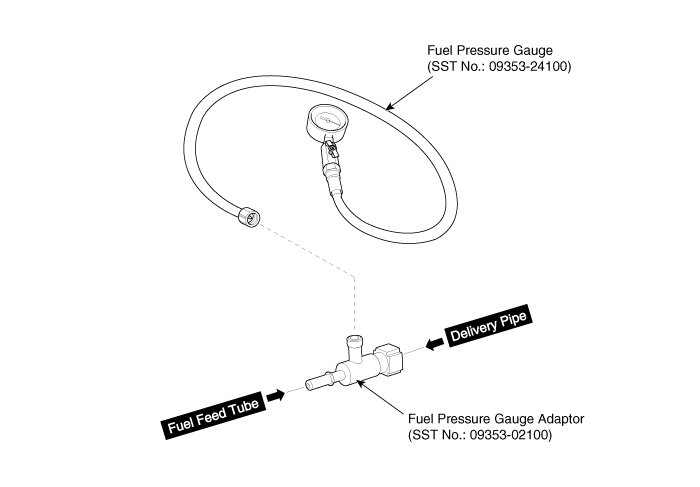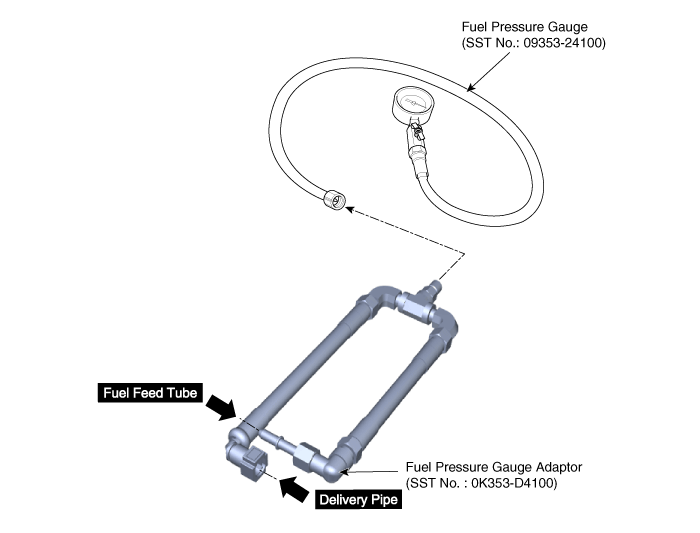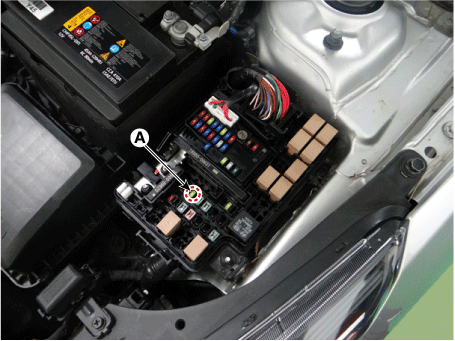Kia Forte: Engine Control / Fuel System / Fuel Delivery System
Components and components location
| Components Location |
| Fuel Tank & Filler-Neck Assembly |
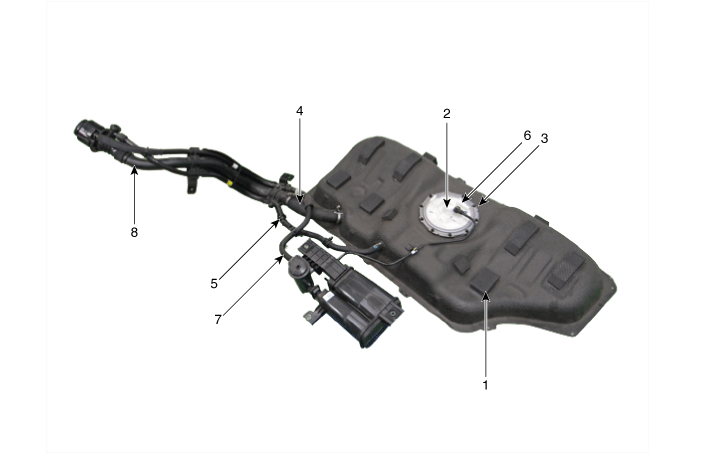
| 1. Fuel Tank 2. Fuel Pump 3. Fuel Pump Plate Cover 4. Fuel Filler Hose |
5. Leveling Tube 6. Vapor port [Fuel pump (Canister) → Intake Manifold] 7. Vapor Hose [Fuel pump (Canister) → Atmosphere] 8. Filler-Neck Assembly |
| Fuel Pump |
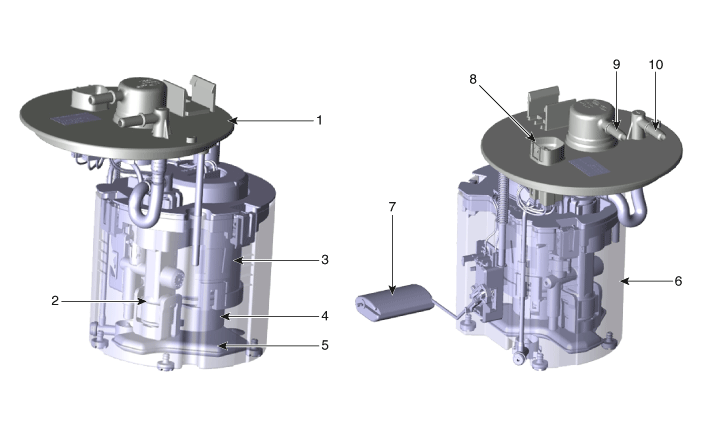
| 1. Head Assembly 2. Fuel Pressure Regulator 3. Fuel Filter 4. Fuel Pump Motor 5. Fre-Filter |
6. Reservoir Cup 7. Fuel Sender 8. Fuel Pump Motor & Fuel Sender Connector 9. Vapor Port [Fuel pump ↔ Canister] 10. Fuel Feed Port |
| [High Pressure Fuel Line] |
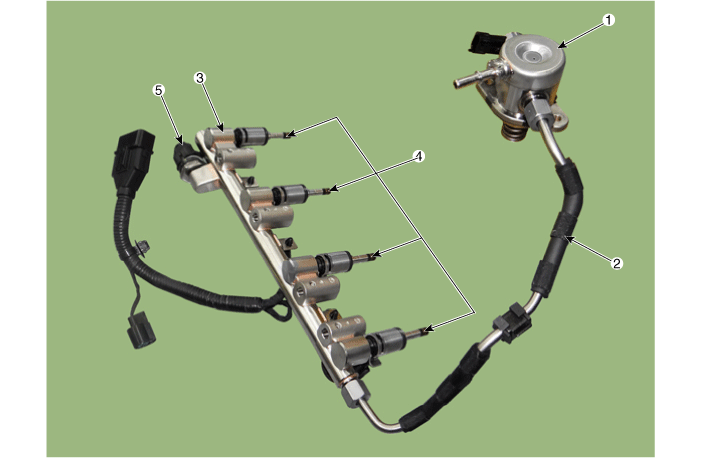
| 1. High Pressure Fuel Pump
2. High Pressure Fuel Pipe |
3. Delivery Pipe 4. Injector |
Whenever the high pressure fuel pump, fuel pipe, deliverypipe, or injector is removed immediately after shutting offthe engine, an injury may be caused by the release ofhighly pressurized fuel. Release the residual pressure inthe high pressure fuel line by referring to the "Residualfuel pressure release procedure" below before removingany high pressure fuel system components. |
Schematic diagrams
| Schematic Diagrams |
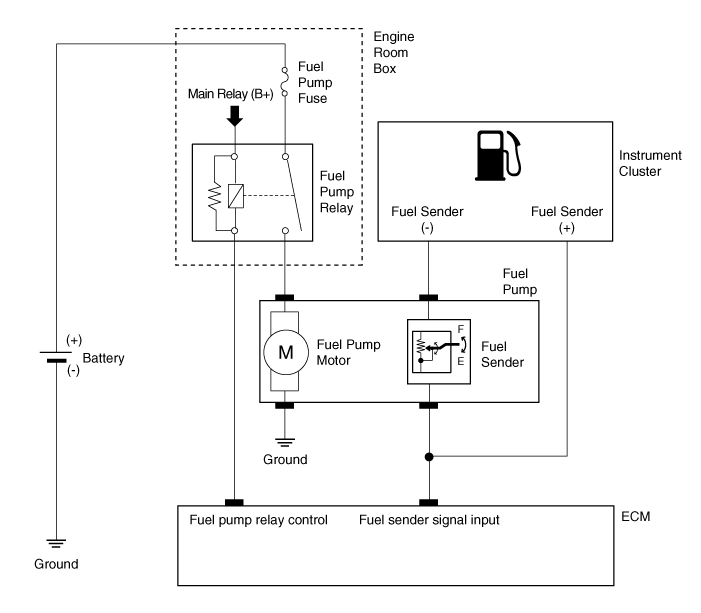
Fuel pressure test (low pressure system)
| Fuel Pressure Test (Low pressure system) |
| 1. |
Release the residual pressure in fuel line. (Refer to the Fuel Delivery System - Inspection - "Release Residual Pressure in Fuel Line").
|
| 2. |
Install the Special Service Tool (SST).
|
| 3. |
Inspect fuel leakage on connections among the low fuel feed tube, the low pressure inlet of high pressure fuel pump, and the SST components with IG ON. |
| 4. |
Measure Fuel Pressure.
|
| 5. |
Release the residual pressure in fuel line. (Refer to the Fuel Delivery System - Inspection - "Release Residual Pressure in Fuel Line").
|
| 6. |
Test End
|
Release residual pressure in fuel line
| Release Residual Pressure in Fuel Line |
There may be some residual pressure even after “Release Residual Pressure in Fuel Line” work, so cover the hose connection with a shop towel to prevent residual fuel from spilling out before disconnecting any fuel connection. |
| 1. |
Turn the ignition switch OFF and disconnect the battery (-) terminal. |
| 2. |
Remove the fuel pump fuse (A).
|
| 3. |
Connect the battery negative (-) terminal. |
| 4. |
Start the engine and let idle. |
| 5. |
Turn the ignition switch OFF after the engine has stopped on its own. |
| 6. |
Disconnect the battery negative (-) terminal, and then install the fuel pump fuse (A). |
| 7. |
Connect the battery negative (-) terminal. |
| 8. |
Delete the Diagnostic Trouble Code (DTC) related the fuel pump fuse with the KDS. |
- Fuel Tank
- Fuel Pump
- Fuel Filter
- Fuel Pump Motor
- Fuel Sender
- Fuel Pressure Regulator
- Fuel Line
- Filler-Neck Assembly
- Delivery Pipe
- High Pressure Fuel Pump
 RCV Control Solenoid Valve
RCV Control Solenoid Valve
Specifications
Specification
Item
Specification
Coil Resistance(Ω)
28.3 - 31.1 [20°C(68°F)]
Description and operat ...
 Fuel Tank
Fuel Tank
Repair procedures
Removal and Installation
1.
Release the residual pressure in the fuel line.
(Refer the Fuel Delivery system - "Release Residual Pressure in Fuel ...
Other information:
Kia Forte 2019-2025 (BD) Service Manual: Valve Clearance
Repair procedures Inspection [Gamma 1.6 MPI/T-GDI] Check the valve clearance. If necessary, adjust the valve clearance by replacing the tappets. – For valve clearance inspection inspection and adjustment. [Gamma 1.6 MPI] (Refer to Engine Mechanical System - & ...
Kia Forte 2019-2025 (BD) Service Manual: Assist Handle
Components and components location Component Location 1. Assist handle Repair procedures Replacement Put on gloves to prevent hand injuries. ...



